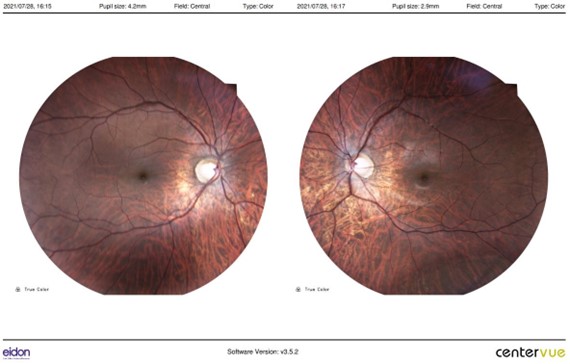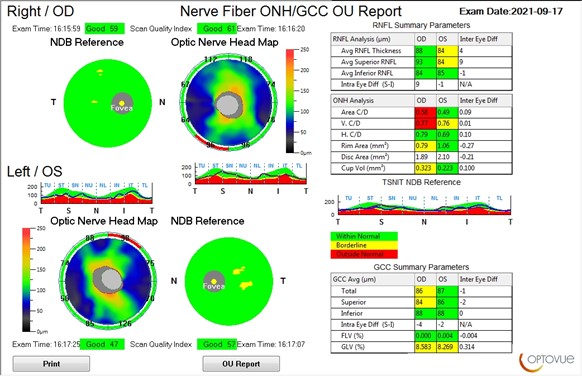BLOG: Glaucoma management requires guidance, compassion
As a primary care optometrist, I know that some patients will come and go. You may prescribe contact lenses or glasses for a young patient and never see them again when they move away to college.
Other patients stay in your practice for life, and it is our responsibility to ensure that all their ocular needs are being met, adequately diagnosed and treated.
When I diagnose glaucoma for the first time in a patient, that is the beginning of an education process that I expect to last for many years. It is important to remember that while I may talk about glaucoma all day long, the patient sitting across from me may be hearing about this disease for the very first time. Often, their first thought is, “Oh, my gosh, I’m going blind.” So, I always try to be steady and reassuring. I tell patients that we’ll do more testing to determine what stage they’re at, and I say, “Your level of concern should mirror my level of concern. When I am concerned about you, I will tell you, and we will work through this together.” I want them to know that I’ll take care of them, prescribe the medications they need and, if necessary, guide them through the next steps if the condition worsens.


I also want them to understand the seriousness of this disease, which is initially asymptomatic, and how important it is to adhere to treatment so that it stays that way. I show patients all the results of their testing and how their visual field, IOP and optic nerve images compare to those of a normal eye and to eyes with more severe glaucoma. I explain that while glaucoma is typically not a rapidly progressive disease, the changes that do occur are irreversible.
Patient understanding depends on consistency and repetition, so I work hard to structure my conversation in the same way during every visit. My patients learn that every single time I am going to go over their current IOP, our goal IOP, testing results from the past and today, and how their eye looks clinically. Then, we also talk about how they feel, how they are doing with using the drops on schedule, and how often they miss a dose. I ask them to show me how they instill drops.
I don’t think it is helpful to berate patients for missing doses. Many people feel bad about admitting they didn’t follow the doctor’s instructions. I don’t want patients to feel frustrated or so guilty that they give up on taking the medication altogether. It’s better if we address barriers to compliance together.
For example, if they have trouble squeezing the bottle because of rheumatoid arthritis or hand tremors, I can get them an auto-squeeze device to help them get more of the drops into the eye where they belong.
When I do have patients who are at higher risk for more advanced progression because of a strong family history, an injury or significant inflammation, we have that conversation at the beginning. I let them know, “Hey, you and I are going to become very good friends. We’re going to see each other often because I need to monitor your eyes closely.”
I have a patient I’ve been seeing since he was 25 years old. He was abused as a child and had traumatic optic neuropathy that was also suspicious for glaucoma. Traumatic glaucoma doesn’t necessarily manifest immediately — it can occur 10 or 20 years after the initial insult. For the first 5 or 6 years that I followed this patient, he had no changes at all. Then, in year 6, I started to see visual field progression. Thus far, latanoprost alone has kept his pressure consistent. He may also develop an earlier cataract and be a candidate for cataract and MIGS surgery in the future.
It is a great privilege and responsibility to follow glaucoma patients over time. Each year, we hope to keep them on track to maintaining good vision. When progression does occur — as it will in many patients — that is the time to offer additional treatment, including surgery when indicated, and a dose of compassion.
For more information:
Nicole Albright, OD, is clinic director at Moses Eyecare Center in Merrillville, Ind., where she also serves as externship coordinator for optometry students from Indiana University and Chicago College of Optometry. She practices full-scope optometry, with a focus on specialty lenses, myopia management, perioperative care and ocular disease management.
Collapse
